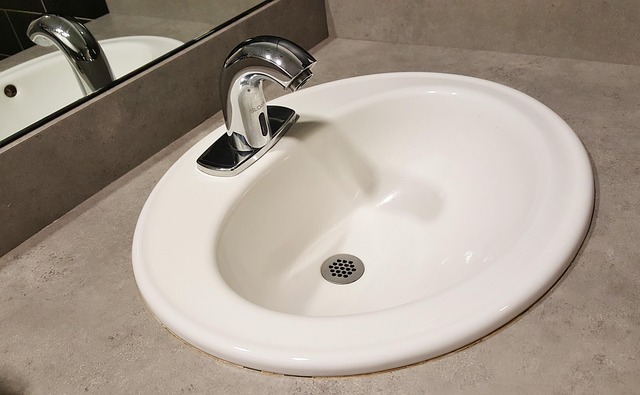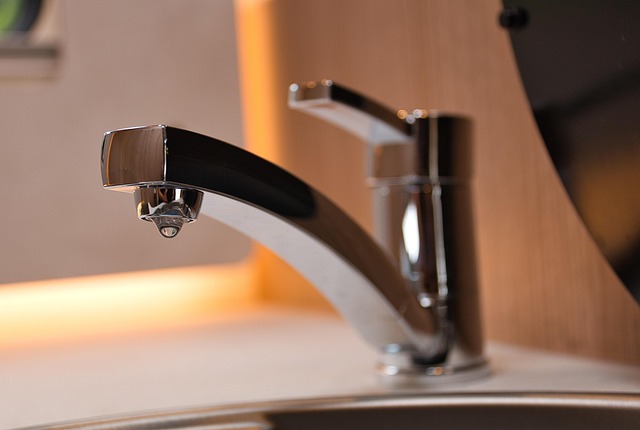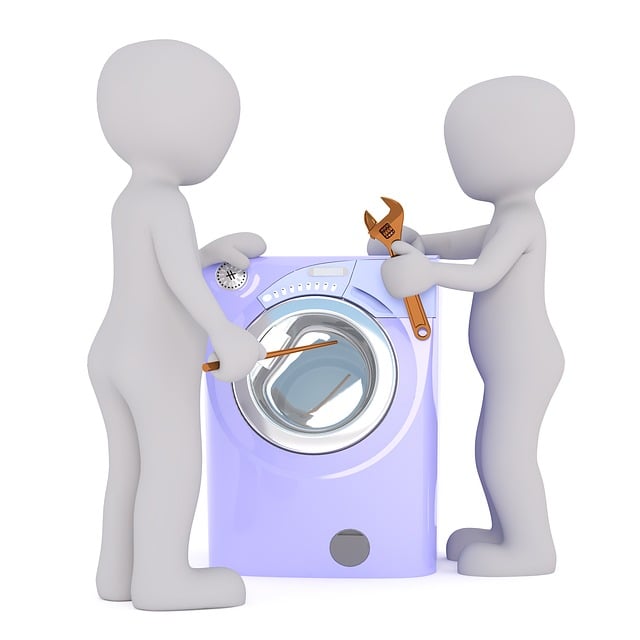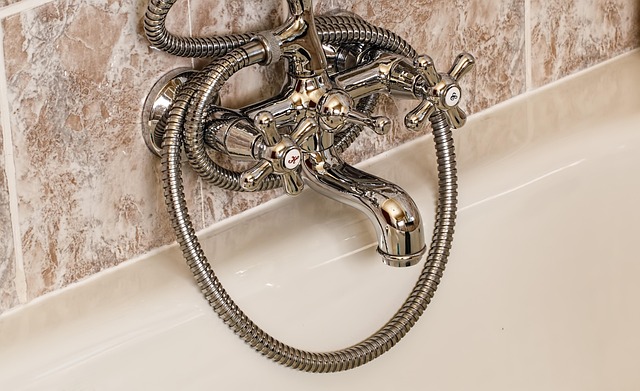Faucet repairs are common household chores with leaks, clogs, and aerator problems being frequent issues. Identifying the source is key for fixes. Basic hand tools or specialized equipment are needed depending on the issue. Regular maintenance through cleaning and inspection prevents problems. Prompt repair of leaks and clogs extends faucet life. Common parts replaced include cartridge, washer, and aerator. DIY repairs are suitable for simple issues; professional services are recommended for complex problems. Regular maintenance and quick action prevent costly repairs. Following a structured process ensures accurate repairs.
“Faucet leaks, clogs, and worn parts are common household headaches. Understanding these issues and knowing how to fix them can save you time and money. This comprehensive guide covers everything from identifying leaks and unclogging faucets to replacing cartridge, washer, or aerator parts. Learn essential tools and techniques for DIY repairs, and when to call a professional plumber. By following our tips on maintenance and avoiding common mistakes, you’ll ensure your faucets remain in top shape, minimizing future repairs.”
Understanding Common Faucet Issues: Leaks, Clogs, and More

Leaks, clogs, and aerator issues are among the most common faucet problems homeowners face. A leak can start as a minor drip and escalate into a significant waste of water and an increased water bill. Identifying the source of the leak—whether it’s a worn-out O-ring, a damaged washer, or a faulty valve—is crucial for effective faucet repair.
Clogs are another frequent issue, often caused by mineral buildup, food debris, or even toilet paper. A simple drain cleaning might suffice for minor clogs, but more severe blockages may require the use of specialized tools or, in extreme cases, complete faucet replacement. Regular maintenance, including cleaning and inspection, can help prevent these common issues from arising.
Gathering the Right Tools for Faucet Repair

When tackling a faucet repair, having the right tools is key to ensuring a smooth and successful outcome. Before beginning, create a checklist of essential items to gather. Basic hand tools such as adjustable wrenches and pliers are often all that’s needed for simple repairs. For more complex issues, consider investing in specialized tools like a faucet disassembly kit or an O-ring cutter, which can make precise cuts without damaging the faucet’s internal parts.
Having the right tools allows for efficient troubleshooting and fixes, saving time and potentially costly mistakes. It’s also beneficial to have a supply of replacement parts on hand, such as washers, O-rings, and cartridge assemblies, which are commonly needed in faucet repairs. With the right toolkit, tackling a faucet repair becomes more manageable and less daunting.
Steps to Fix a Leaking Faucet: A Comprehensive Guide

A leaking faucet is not only an annoyance but can also lead to wasted water and increased water bills. Fortunately, many common faucet leaks can be easily fixed with a few simple steps. First, locate the faucet’s supply lines under the sink or behind the cabinet. Turn off the water by tightening the shut-off valves clockwise using an adjustable wrench. Next, disassemble the faucet by unscrewing any visible screws or quick-connect fittings. Inspect the O-ring or washer for damage; if it’s worn or torn, replace it with a new one from your local hardware store. Once the old parts are replaced, reassemble the faucet and turn on the water slowly, checking for leaks at each connection point. If there are no leaks after testing, your faucet repair is complete.
For more complex issues like aerator buildup or damaged internal components, professional faucet repair services might be necessary. A qualified plumber can diagnose and fix these problems using specialized tools and expertise. Don’t ignore persistent leaks; timely intervention can prevent further damage and ensure the longevity of your faucet. Remember, proper maintenance and regular checks can go a long way in keeping your faucets in top condition.
Unclogging a Faucet: Techniques and Tips for Success

Unclogging a faucet is a common issue that many homeowners face, and it’s a simple task that can be tackled with the right techniques. Before reaching for chemical cleaners, consider trying these effective and eco-friendly methods. Start by removing any visible debris from the sink drain using pliers or a fork, as sometimes a simple clearing of gunk or hair can resolve the clog. Then, try using hot water to flush out the pipe; pour boiling water down the drain several times, waiting for it to cool between each attempt.
For more stubborn clogs, a mixture of baking soda and vinegar is a powerful combination. Pour 1/2 cup of baking soda into the drain, followed by 1/2 cup of vinegar, and let it fizz and bubble for about 30 minutes. This natural reaction helps to break down any grease or soap scum. After the reaction has subsided, flush the mixture with hot water to wash away any remaining residue. If these methods don’t work, a minor faucet repair might be needed, which often involves replacing the washer or aerator, simple tasks that can be accomplished with basic tools and a little know-how.
Replacing Faucet Parts: Cartridge, Washer, or Aerator?

When it comes to faucet repairs, one of the most common tasks is replacing damaged or worn-out parts. The three primary components that often need attention are the cartridge, washer, and aerator. Each serves a unique purpose in ensuring smooth water flow and proper pressure regulation.
The cartridge controls the water flow and temperature, acting as the faucet’s internal valve. Washers create a watertight seal between parts, preventing leaks. An aerator, located at the tip of the spout, mixes air with water to maintain pressure while also filtering out any impurities. Identifying the specific issue will help in selecting the right replacement part for efficient and effective faucet repair.
When to Call in a Professional Plumber

If you’re faced with a leaky faucet or a clogged drain, it’s tempting to attempt a DIY fix. However, some issues require the expertise of a professional plumber. Knowing when to call in the experts is crucial for effective and lasting faucet repair.
Signs that it’s time to hire a plumber include persistent leaks that can’t be easily fixed, hard-to-reach or stubborn clogs, low water pressure, or any damage to pipes or fixtures. A professional will have the right tools and knowledge to diagnose complex problems and provide long-lasting solutions, ensuring your plumbing system functions optimally and efficiently.
Maintaining Your Faucets to Prevent Future Repairs

Regular maintenance is key to preventing costly and inconvenient faucet repairs. A simple routine can go a long way in keeping your faucets in top condition. Start by inspecting them regularly for any signs of damage, leaks, or unusual noises. These issues might seem minor, but they could indicate problems that, if left unattended, could escalate into more severe faults.
Keep your faucets clean and free from mineral deposits by regularly flushing them. This process involves running hot water through the faucet to remove any built-up residue. Additionally, lubricating the faucet’s moving parts with a light oil can help maintain their smooth operation, further reducing the risk of repairs.
Common Mistakes to Avoid During Faucet Repair

When attempting a faucet repair, common mistakes can prolong the process and lead to further damage. One of the most frequent errors is not turning off the water supply before starting the repair, which can result in flooding and unnecessary delays. Always locate and close the shut-off valves beneath the sink or behind the faucet to prevent water from flowing during the fix.
Another blunder is attempting to skip or rush the disassembly process. Taking your time and carefully separating each component ensures a more accurate diagnosis of the problem. Rushing can lead to damage or misplacement of parts, making the repair more challenging. Following a logical sequence, as outlined in many DIY guides, can help avoid these mistakes and make faucet repair a smoother task.
